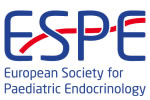hrp0084p2-297 | Diabetes | ESPE2015
GH Promotes mRNA Expression and Secretion of Progranulin in 3T3-L1 Cells
Song Guo , Hongshan Chen , Jun Zhang , Minlian Du , Huamei Ma , Yanhong Li , Qiuli Chen , Yangshui Peng
hrp0097p2-162 | GH and IGFs | ESPE2023
Correlation between IGF-1 at diagnosis and adult height in children with short stature
Incandela Valeria , Lussu Anna , Guzzetti Chiara , Ibba Anastasia , Loche Sandro , Casula Letizia
hrp0089p2-p092 | Diabetes & Insulin P2 | ESPE2018
Hypertriglyceridemia in Type 1 Diabetes Children During Diabetic Ketoacidosis; Relation to DKA Severity and Glycemic Control
Fawaz Lubna , Musa Noha , AbdelAtty Sahar , Nassef Ahmed
hrp0086p1-p250 | Diabetes P1 | ESPE2016
Type 1 Diabetes (T1D) Management with Few Blood Glucose (BG) Measurements but Frequent Free Adjustment of Treatment with Cell Phones or E-mails
Bibal Cecile , Laure Castell Anne , Aboumrad Brigitte , Lucchini Philippe , Bougneres Pierre
hrp0082p2-d3-485 | Hypoglycaemia | ESPE2014
Nocturnal Hypoglycaemia in Diabetic Children: Continuous Glucose Monitoring Reveals More of the Iceberg
Bachmann Sara , Martin Eva , Ritschard Vreni , Hess Melanie , Jockers Katharina , Vuissoz Jean-Marc , Zumsteg Urs
hrp0082p3-d2-640 | Adrenals & HP Axis (1) | ESPE2014
Therapeutic Troubles of Cushing’s Disease in Adolescence: Report of a Case
Deiana Manuela , Losa Marco , Trettene Adolfo , Scolari Alessandra , Salvatoni Alessandro
hrp0082p3-d3-943 | Puberty and Neuroendocrinology (1) | ESPE2014
Triptorelin Test in the Diagnosis of Precocious Puberty
Kabour Saida , Fedala Soumeya , Yaker Fetta Amel , Haddam Ali el Mahdi , Rabhi Lila , Chentli Farida , Meskine Djamila
hrp0084p2-284 | Diabetes | ESPE2015
In-Patient Care for Children with Type 1 Diabetes – A Regional Audit in the Yorkshire and Humber Region in the North of England
Uday Suma , Amin Nadia , Campbell Fiona , Yong James
hrp0084p2-363 | Fat | ESPE2015
Sleep and Weight Status at 4 Years in the Inma Asturias Cohort
Riano-Galan Isolina , Rodriguez-Dehli Cristina , Fernandez-Somoano Ana , Tardon Adonina
hrp0097p1-520 | Growth and Syndromes | ESPE2023
Does cervical medullary decompression have an impact on growth in children with achondroplasia?
Fava Daniela , Tedesco Caterina , Angelelli Alessia , Napoli Flavia , Pepino Carlotta , Pepe Alessia , Teruzzi Daniela , Pisati Angelica , Fay Cortella Maria , Binelli Maria , Maghnie Mohamad , Di Iorgi Natascia , Elsa Maria Allegri Anna



